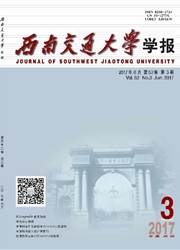

 中文摘要:
中文摘要:
针对大规模复杂三维城市场景三维可视化的数据调度效率不高、视觉一致性差等关键问题,提出了一种视觉感知驱动的复杂三维城市场景数据自适应组织管理与动态调度方法.该方法根据三维场景数据的空间分布特征,利用自适应四叉树对复杂三维城市场景进行不同层次粒度的划分,并自底向上遍历四叉树,为中间节点生成LOD(level of detail)和计算各个层级的几何误差,构建灵活的多粒度三维瓦片模型,最后根据屏幕误差评估建筑物模型的三维几何特征(形状、尺寸、高度)等视觉感知参数,约束不同细节层次模型的自适应调度.选择了柏林4个细节层次的三维城市模型数据,进行交互式三维漫游测试.实验结果表明,基于视点相关HLOD(hierarchical LOD)动态调度,动态可视化的渲染帧率始终保持在40 f/s左右,达到了网络环境下复杂三维城市场景数据动态调度的高效性和三维可视化视觉一致性的要求.
 英文摘要:
英文摘要:
Focusing on the problems of inefficient 3D model scheduling and low visual consistency of complex 3 D urban scene visualization, a self-adaptive organization and scheduling method for 3 D urbanscenes driven by visual perception is proposed. Based on the spatial distribution of 3D city models, the adaptive quadtree partition was used to divide the complex 3D scene into different levels of granularity. Subsequently, traversing the quadtree from bottom to top, levels of detail ( LODs) were generated for the intermediate nodes, and the geometric error of each layer was calculated to construct a flexible multi-granularity 3D tile model. Finally,visual perception parameters such as the shape, size, and height of the building model were evaluated by employing the screen error, which was used to constrain the self-adaptive scheduling of LODs. The 3D models of four LODs in Berlin were selected for an interactive 3D roaming test. The experimental results show that the rendering frame rate was more than 40 f/s based on the view-related hierarchical LOD dynamic scheduling, which could ensure efficient dynamic scheduling and visual consistency of the complex 3D urban scene in a network environment.
 同期刊论文项目
同期刊论文项目
 同项目期刊论文
同项目期刊论文
 期刊信息
期刊信息
